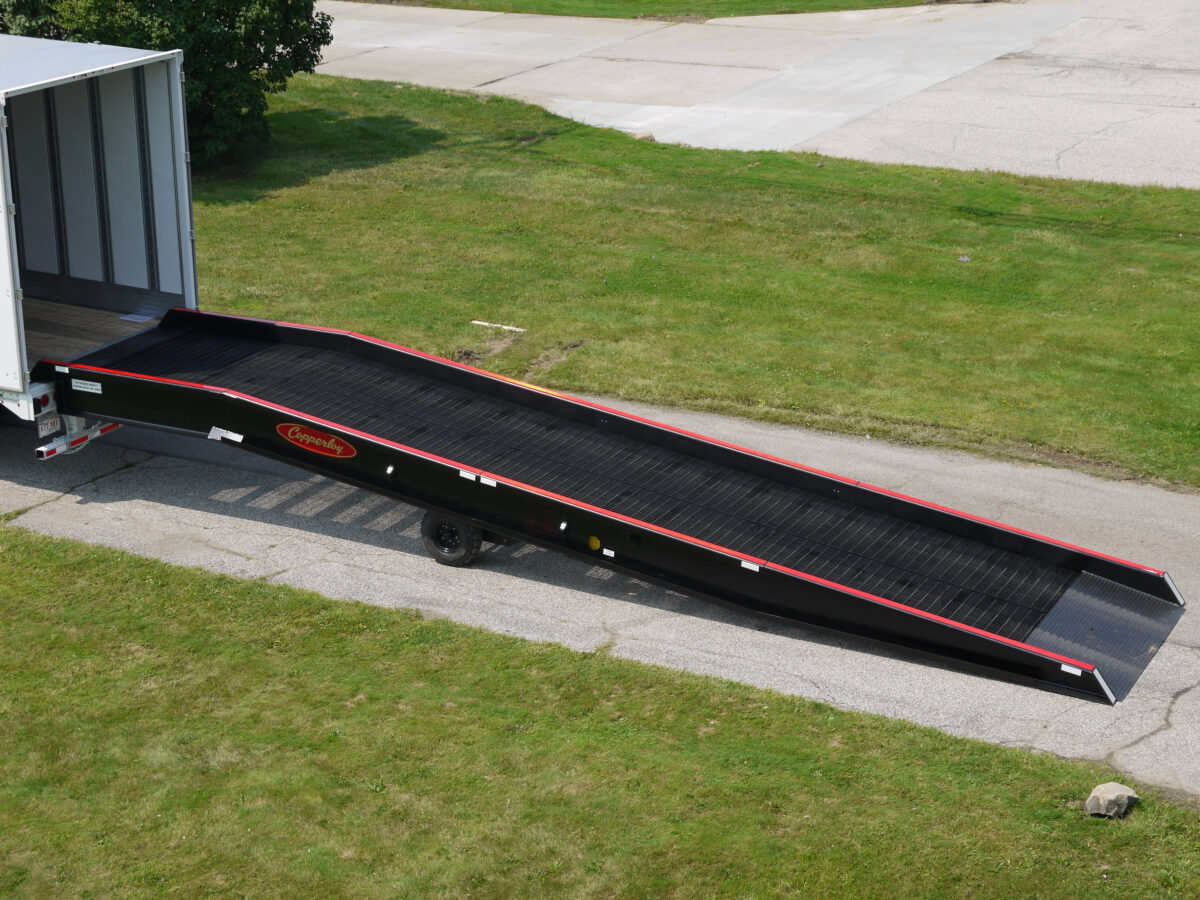Warehouse dock ramps are critical for efficient logistics and material handling. They help move goods smoothly but can also lead to injuries without proper safety measures. This guide highlights best practices to ensure safety around warehouse yard ramps, covering hazards, essential safety gear, loading techniques, employee training, and regular maintenance.
Understanding Warehouse Dock Ramp Hazards
Warehouse ramps, or warehouse yard ramps, connect loading docks to trucks or trailers. While they boost efficiency, they also create risks. Recognizing these hazards is key to preventing injuries.
Common Hazards of Warehouse Dock Ramps
| Hazard | Description |
| Slipping and Falling | Wet or icy conditions can cause slips, especially with heavy loads. |
| Equipment Malfunction | Poorly maintained ramps may collapse or malfunction, risking worker safety. |
| Overloading | Exceeding weight limits can cause accidents and equipment failures. |
| Inadequate Lighting | Poor lighting can obscure hazards and increase accident risks. |
Identifying Risks Through Regular Assessments
Conducting regular safety assessments helps spot potential hazards. Routine inspections allow you to:
- Identify wear and tear on ramps and surrounding areas.
- Check that safety features like guardrails are intact.
- Evaluate loading processes for improvements.
Proactive risk identification can significantly reduce accidents.
Essential Safety Gear for Warehouse Dock Ramp Operations
Proper safety gear protects workers around warehouse dock ramps. Personal protective equipment (PPE) enhances safety and complies with health regulations.
Key Safety Gear
| Gear | Purpose |
| Hard Hats | Protects against head injuries from falling objects. |
| Safety Shoes | Steel-toed shoes shield feet from heavy loads. |
| High-Visibility Vests | Increase visibility in busy environments. |
| Gloves | Protect hands from cuts and abrasions. |
| Back Support | Helps prevent strain during heavy lifting. |
Importance of PPE Training
Training workers on how to wear PPE correctly is crucial. Regular workshops reinforce the importance of using safety gear consistently around warehouse dock ramps.
Best Practices for Safe Loading and Unloading
Safe loading and unloading practices minimize accident risks on warehouse dock ramps. Adopting these practices protects workers and ensures efficient operations.
Step-by-Step Guide
- Assess the Load: Check the weight and size of the load to ensure the ramp can handle it.
- Use Proper Equipment: Forklifts and pallet jacks reduce injury risks. Always ensure equipment is in good condition.
- Maintain Clear Communication: Use hand signals or two-way radios to keep everyone informed during loading and unloading.
- Positioning: Align trucks properly with the dock ramp and use wheel chocks to secure vehicles.
- Load Distribution: Evenly distribute weight on the ramp and in trucks to maintain balance.
Using Spotters for Safety
For large or heavy loads, a spotter can enhance safety by guiding equipment operators and ensuring smooth operations.
Real-Life Example
In a recent incident at a logistics company, a properly trained spotter prevented a potential accident by directing a forklift operator while unloading a heavy shipment. This practice not only improved safety but also increased loading efficiency.
Training Your Team on Safety Protocols
Training fosters a safety-conscious warehouse culture. Comprehensive programs should cover all aspects of working around dock ramps.
Components of Effective Training
- Understanding Risks: Teach workers about hazards associated with warehouse dock ramps.
- Safe Operation of Equipment: Train on proper use of material handling equipment and ensure operators are certified.
- Emergency Procedures: Equip workers with knowledge on what to do in emergencies.
- Regular Refresher Courses: Schedule ongoing training to keep safety protocols fresh and address new hazards.
Encouraging a Culture of Safety
Promote a culture where everyone feels responsible for safety. Encourage employees to report unsafe conditions without fear of retaliation.
| Best Practice | Description | Frequency | Responsible Party |
| Routine Inspections | Check ramps for signs of wear, cracks, or damage. | Weekly | Safety Officer |
| Cleaning | Maintain cleanliness by addressing spills immediately. | Daily | Warehouse Staff |
| Lubrication | Ensure moving parts are lubricated for smooth operation. | Monthly | Maintenance Team |
| Weight Limit Signs | Verify weight limit signs are visible and intact. | Quarterly | Warehouse Manager |
| Professional Maintenance | Schedule evaluations and repairs by trained technicians. | Bi-annually | Operations Manager |
Regular Maintenance Checks for Warehouse Dock Ramps
Regular maintenance keeps warehouse dock ramps safe and efficient. A well-maintained ramp reduces accident risks and extends equipment life.
Key Maintenance Practices
- Routine Inspections: Check for signs of wear, cracks, or damage and document findings.
- Cleaning: Keep ramps and surrounding areas clean and address spills immediately.
- Lubrication: Ensure moving parts are lubricated for smooth operation.
- Weight Limit Signs: Display weight limits clearly to prevent overloading.
Scheduling Professional Maintenance
Consider scheduling professional maintenance regularly. Trained technicians can evaluate and repair equipment beyond staff capabilities.

